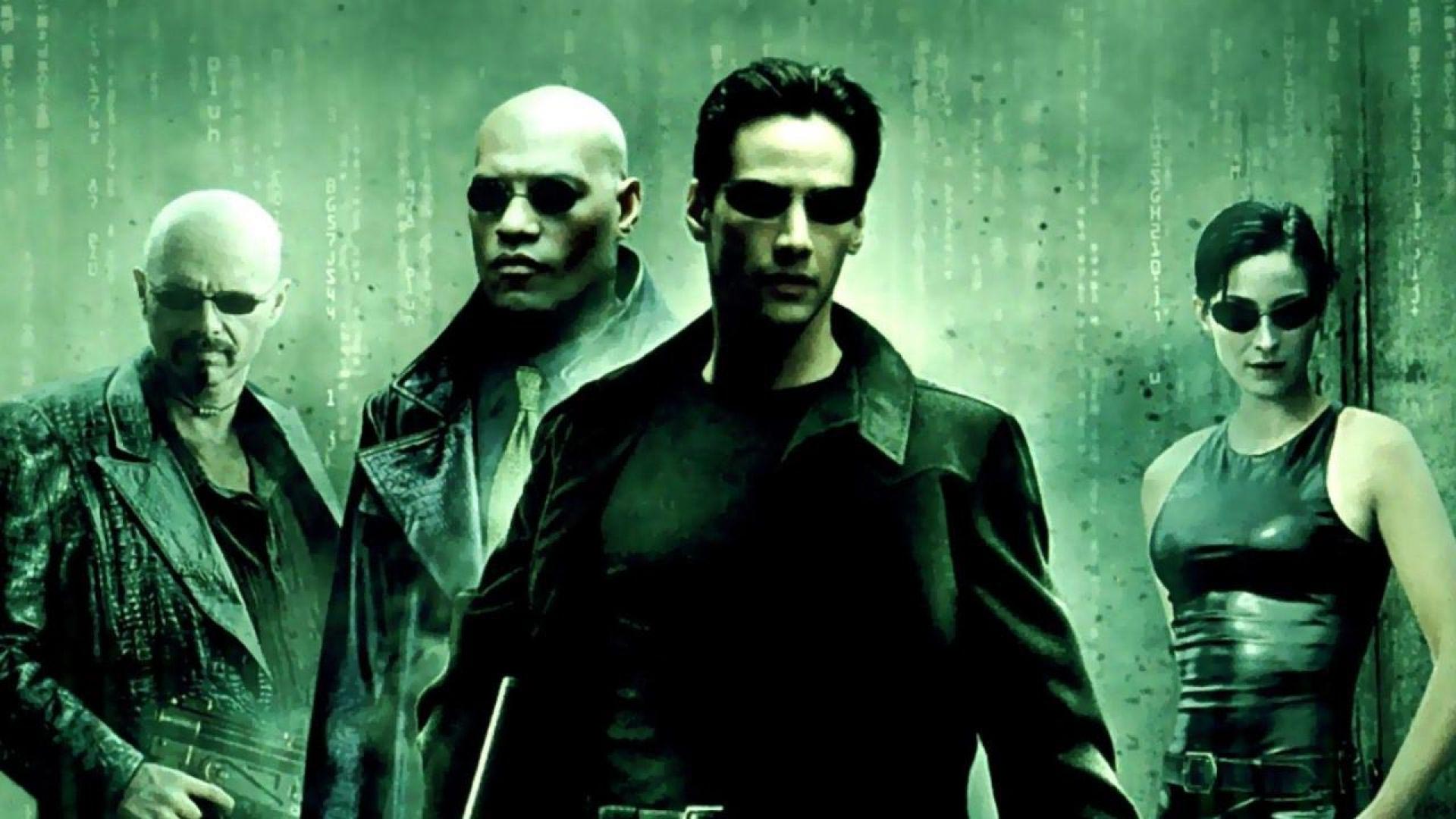
In many ways cinema in the 1990s saw a science fiction renaissance, thanks in no small part to state-of-the-art special effects, high concept ideas, unique artistry, and big box-office. Following Taste of Cinema’s recent lists of accomplished sci-fi classics from the 1970s and 1980s, the decade that gave us grunge, and boy bands in profusion also gave us Jurassic Park and The Matrix. The 90s were every bit as good as the years that lead up to it.
The following list eschews a few of the 90s most successful sci-fi films––movies like Independence Day and The Phantom Menace, which, let’s face it, box-office receipts aside, were pretty predictable and dull––in favor of the films that really made the 90s standout. Here you’ll find movies that take huge risks, that offer powerful female protagonists, virtual reality pipe dreams, dystopian byways, populist crowd pleasers, arthouse hits, inspired sleepers, and a whole lot more.
25. Contact (1997)

Robert Zemeckis’s Contact fondly adapts Carl Sagan’s best known novel about a young astronomer named Dr. Ellie Arroway (Jodie Foster) who receives a mysterious signal from the vastness of outer space. Throw in a teeth-gnashing National Security Advisor named Michael Kitz (James Woods), and a hunky Christian philosopher named Palmer Joss (Matthew McConaughey) and a zip of that Zemeckis schmaltz and you’re left with a fairly divisive but certainly entertaining sci-fi escape.
Like so many of Zemeckis’ far-reaching films––Forrest Gump anyone?––Contact suffers from big bouts of sentimentality, self-importance, and a flustering penchant for playing it safe.
That said, the special effects are phenomenal, one favorite is the through-the-mirror tracking shot that’s worthy of a standing-o, a climax that may disappoint but is still a visceral thrill, and a gobsmacking opening shot of the cosmos that would’ve made Sagan cheer. Even if you don’t like Contact by the closing credit scroll, you’ll appreciate some of it, and marvel at the overall spectacle.
24. Men in Black (1997)
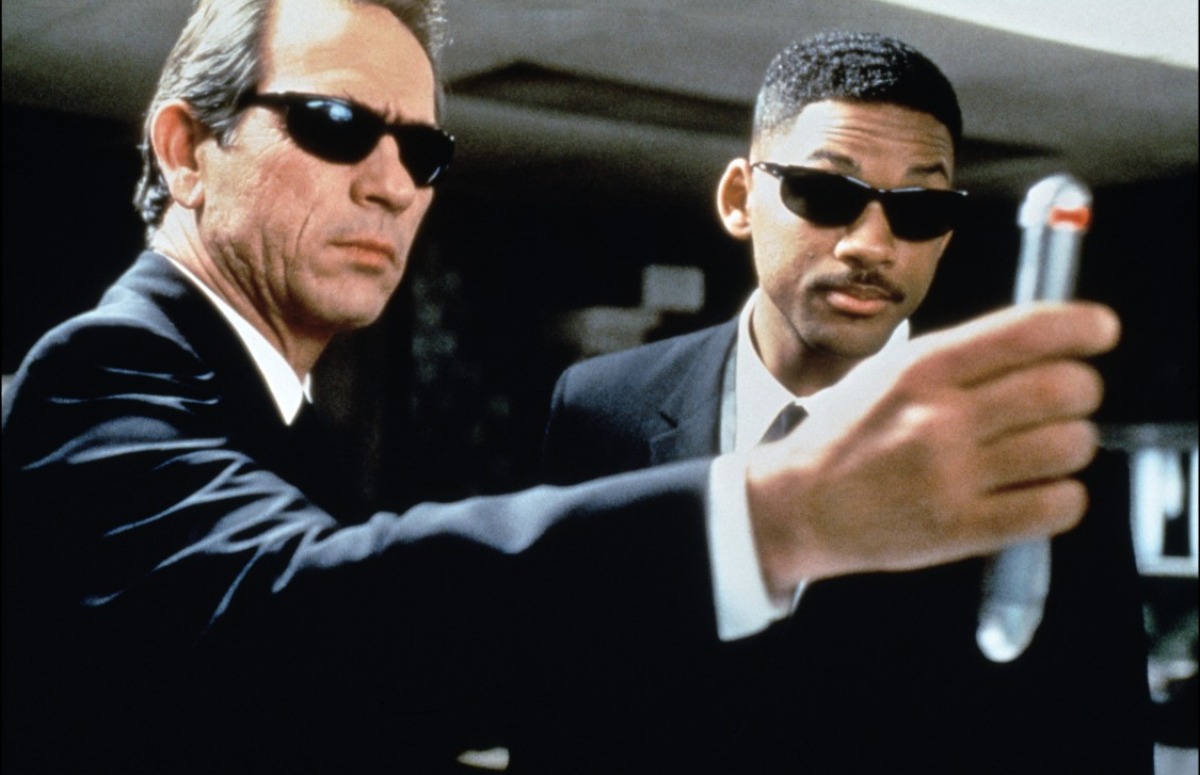
Noticeably absent from this list is Roland Emmerich’s 1996 sci-fi disaster movie Independence Day––the operative word here is “disaster”––but that film’s star, everybody’s favorite fresh prince, Will Smith, returned to summer blockbusters from deep outer space the following year with the vastly superior Men in Black.
Director Barry Sonnenfeld’s kismet action comedy smartly stitched together buddy cop precepts with big stars (Tommy Lee Jones makes a great straight man for Smith), winning and wonderful effects from Industrial Light and Magic, all while loosely adapting a Marvel Comic most people never even heard of.
The film is a farfetched series of pratfalls and cool creature effects, and helped to kick off a pug craze––those wrinkly woofers are so cute!––but the resulting fanfare was pretty satisfying and fun. True, the other films in the franchise would suffer from diminishing returns, and reiteration, but at the time MIB was refreshing. Bonus points for the film providing last minute Halloween costumes for uninspired dudes the world over.
23. Escape from L.A. (1996)
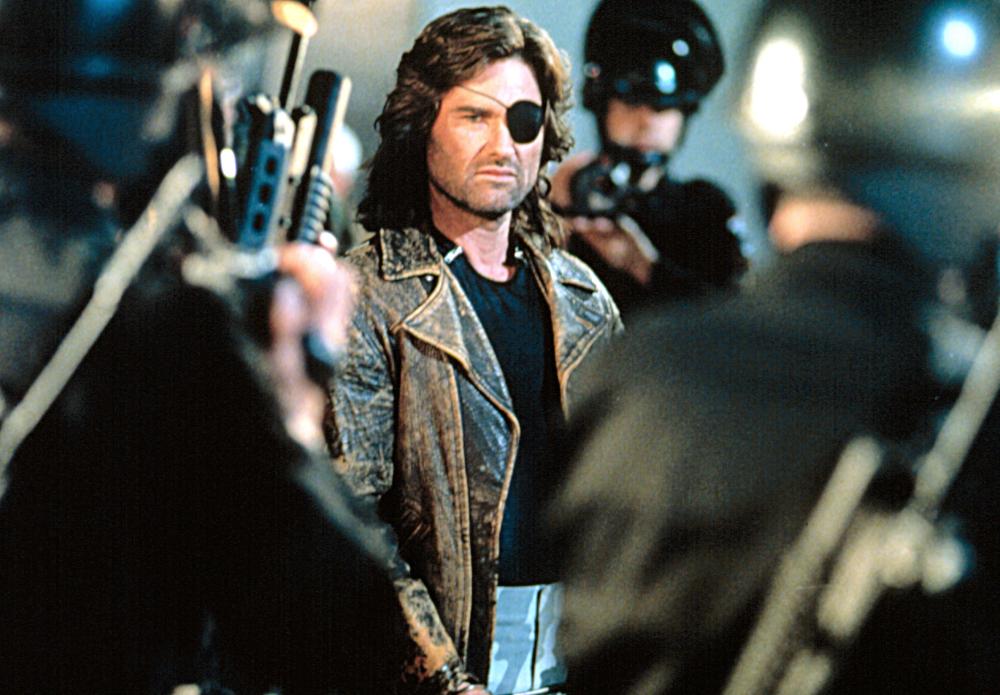
A reappraisal of John Carpenter’s Escape from L.A. is long overdue, and it’s a pity that audiences didn’t better appreciate and buoy up this sharp, shoot the works sequel to 1981’s dystopian knockout hit Escape from New York. Set in the year 2013 and not long after Los Angeles was leveled by an enormous earthquake, isolated from the continent by a flooded San Fernando Valley and quickly converted into a prison island, a citadel for scum.
Enter Kurt Russell reprising his ultra-masculine anti-hero Snake Plissken and it’s only a matter of minutes before shit gets real. And some lame mid-90s CGI aside, this Escape offers more stinging satire, Machiavellian mischief, and pitch-black laughs than its appealing predecessor.
“Escape from L.A. is better than the first movie––ten times better––it’s got more to it! It’s more mature. I think some people didn’t like it because they felt it was a remake, not a sequel,” Carpenter told Creative Screenwriting in a 2014 interview, adding with a little venom: “People didn’t want to see Escape that time, but they really didn’t want to see The Thing, either. You just wait.”
22. Jurassic Park (1993)
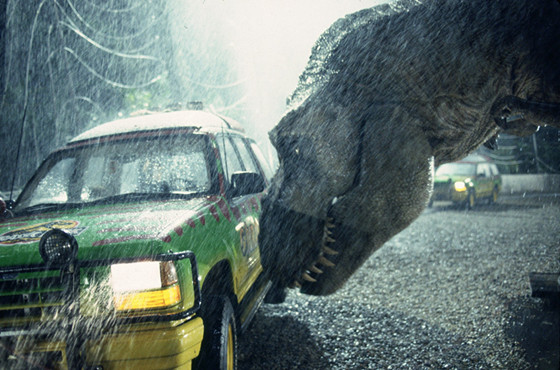
Steven Spielberg’s sci-fi theme park thriller, adapted from Michael Crichton’s bestselling novel, brings us dinosaurs brought back to life via DNA fossilised in amber.
Billionaire John Hammond (Richard Attenborough) has envisioned an island zoo complete with T-Rex, velociraptors, and other prehistoric beasts, naïvely assuming nothing could possibly go wrong. But don’t worry, Sam Neill, Laura Dern, Jeff Goldblum, and some annoying child actors will intervene––this is Spielberg after all––and if it weren’t for the CGI and animatronic dinosaurs destroying shit, we might’ve checked out long ago.
As far as blockbuster thrill rides go, Jurassic Park is earth-shaking entertainment with sustained suspense, even if it’s all overplayed and wannabe pedantic. It’s a great popcorn movie with Spielberg’s standardized nostalgia and some truly enjoyable rampaging dinos.
21. Screamers (1995)
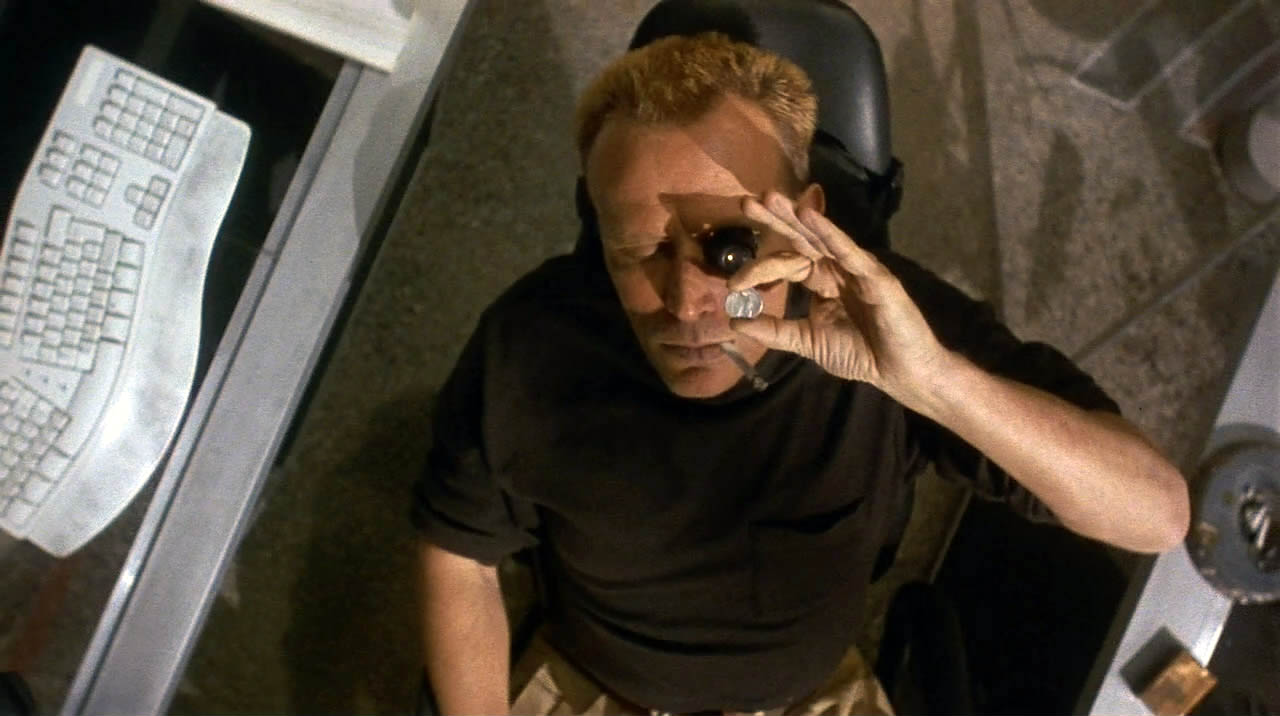
Christian Duguay’s dystopian Philip K. Dick adaptation––his 1953 short story Second Variety is the film’s jumping off––is now considered something of a cult classic. Set in the year 2078, on the planet Sirius 6B where a civil war is brewing and reality and illusion are on a collision course. Enter Colonel Hendricksson (Peter Weller) of the Alliance, a man increasingly more suspicious of his associates, and of the titular and ever-adapting screamers, which can infiltrate ranks with ease.
Running a gamut of guilty-pleasure schemes—smart characters acting like idiots at almost every turn, irony-rich one-liners, characters you can’t wait to see get their comeuppance—Screamers recalls at best, John Carpenter’s The Thing, James Cameron’s The Terminator, and at worst, a dozen or so lesser movies with the same familiar premise. Screamers is a subversive howl that’s been sorely underrated for far too long.
20. Pi (1998)
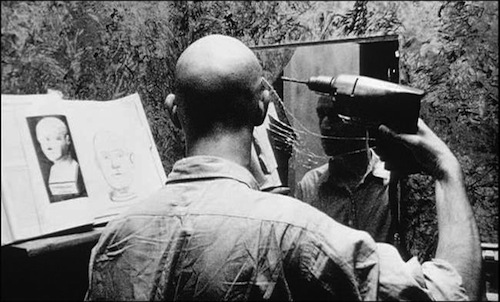
Darren Aronofsky’s startling directorial debut is a crazy quilt of surrealist sci-fi tempered with psychological thriller designs and dire strangeness.
Eerie, intense, and never less than compelling, Pi tells the story of Max Cohen (Sean Gullette), a mathematician and number theorist obsessed with the spooks of regularity, hounded by religious zealots who want their apocryphal text deciphered and the true name of their deity uncovered. If the plot appears to echo “The Nine Billion Names of God” by Arthur C. Clarke, it’s in homage to the great futurist and SF author par excellence.
While not your atypical sci-fi film, and certainly there will be naysayers to its inclusion on this list, the DIY aesthetic––typified with grainy, high-contrast black-and-white cinematography––pairs perfectly with Max’s paranoiac environs, stark apartment, and antiquated, archaic even, computers and adding machines. Pi is a rewarding cult picture which, upon close inspection, anticipates Aronofsky’s later sci-fi spectacle The Fountain.
19. Event Horizon (1997)
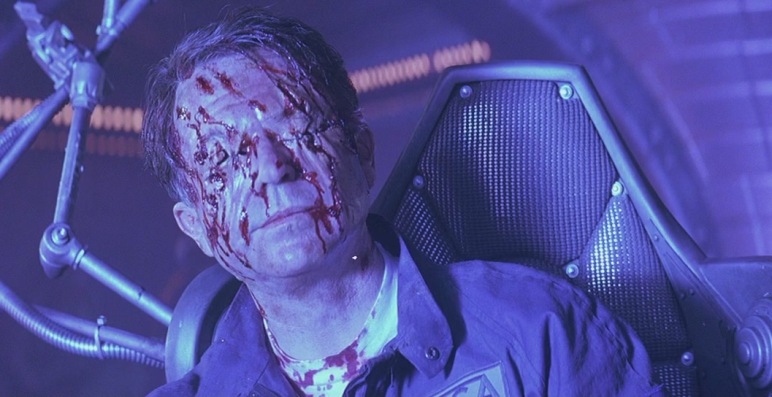
The experiential starship the Event Horizon has mysteriously returned after a seven-year disappearance and answering its distress signal is the rescue ship Lewis & Clark in arguably director Paul W.S. Anderson’s finest film––this isn’t saying much FYI––the sci-fi horror freakout, Event Horizon.
Captain Miller (Laurence Fishburne), Commanding Officer of the Lewis & Clark, is soon to be acquainted with Dr. William Weir (Sam Neill, a far cry from his family friendly Jurassic Park curmudgeon), designer of the Event Horizon, but before you can say “OMG, what happened to your eyes?” the shit and the fan are fatefully assigned.
Bluntly bringing together bizarrely over-the-top gruesome imagery, a kooky yet cool concept, and thankfully not too much of that awful late 90’s CGI effects, Event Horizon is, as Total Film suggests, “The Shining in space.”
No doubt part of what makes the movie work was a last minute rewrite from Se7en scribe Andrew Kevin Walker, but anyway you slice it, Event Horizon is in the tradition of The Thing in that it took a reappraisal a few years after its release for the cult to embrace it, and the critics to rethink its merits. And kudos to Mr. Neill for inhabiting what’s arguably the most evil person in deep space. Yikes!
18. The Fifth Element (1997)
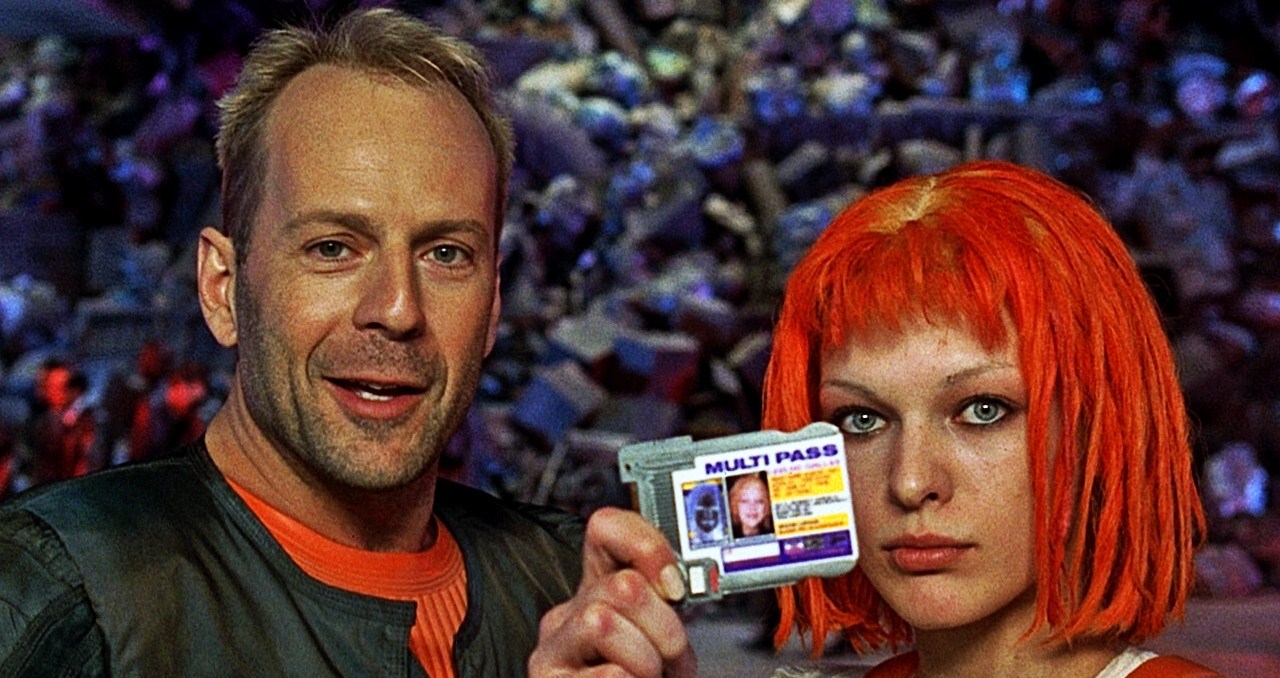
Idiosyncratic to a fault, French filmmaker Luc Besson’s The Fifth Element is a wayward space fantasy that draws deeply from the well of Blade Runner and bandes dessinées illustrator Mœbius, with mystifyingly mixed results.
Rarely does a big-budget, go-for-broke, futuristic sci-fi extravaganza crammed with A-listers go off the rails as much as this movie, and yet it’s oddly compelling, and, before you know it, you’re fist pumping along to action-man Korben Dallas (Bruce Willis), a taxicab driver with a history in the Special Forces––oh, and did we mention his car can fly? It can fly.
Also along for the ride is Milla Jovovich’s oddly OTT performance as Leeloo, a supreme being who seems allergic to clothes, a gauche Gary Oldman as an evil industrialist, and gratingly disagreeable “comic-relief” from Chris Tucker.
Unsurprisingly, Besson based his script off of a novel he wrote when he was a teenager––it shows––and yet, what the heck, The Fifth Element is a hot fudge sundae of guilty pleasures. Startling imagery packs every frame, Dan Weil’s inspired production design ravishes, Nick Dudman’s creature designs are delightful, Jean-Paul Gaultier’s costumes make no sense and yet are marvellous, all aggregating to a visually inventive fever dream, a potpourri that won’t work for everyone.
The Fifth Element is largely a love-it-or-leave-it affair that lingers in the mind, a miscellany that just might really work for you. Or not. My father in-law loves it.